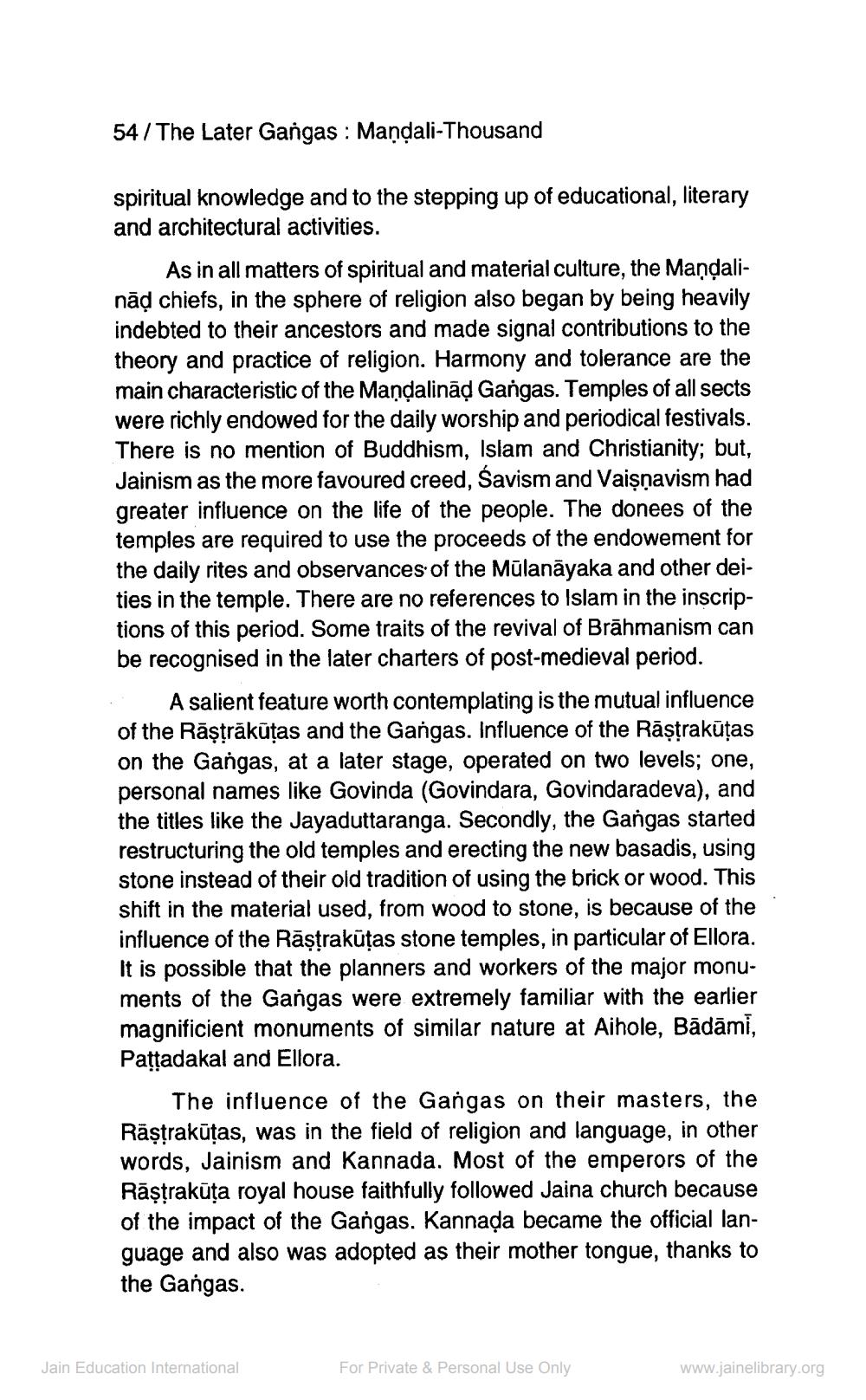________________
54 / The Later Gangas : Mandali-Thousand
spiritual knowledge and to the stepping up of educational, literary and architectural activities.
As in all matters of spiritual and material culture, the Mandalinād chiefs, in the sphere of religion also began by being heavily indebted to their ancestors and made signal contributions to the theory and practice of religion. Harmony and tolerance are the main characteristic of the Mandalinād Gangas. Temples of all sects were richly endowed for the daily worship and periodical festivals. There is no mention of Buddhism, Islam and Christianity; but, Jainism as the more favoured creed, Savism and Vaişņavism had greater influence on the life of the people. The donees of the temples are required to use the proceeds of the endowement for the daily rites and observances of the Mūlanāyaka and other deities in the temple. There are no references to Islam in the inscriptions of this period. Some traits of the revival of Brāhmanism can be recognised in the later charters of post-medieval period.
A salient feature worth contemplating is the mutual influence of the Rāştrāküțas and the Gangas. Influence of the Rāştrakūtas on the Gangas, at a later stage, operated on two levels; one, personal names like Govinda (Govindara, Govindaradeva), and the titles like the Javaduttaranga. Secondly, the Gangas started restructuring the old temples and erecting the new basadis, using stone instead of their old tradition of using the brick or wood. This shift in the material used, from wood to stone, is because of the influence of the Rāştrakūtas stone temples, in particular of Ellora. It is possible that the planners and workers of the major monuments of the Gangas were extremely familiar with the earlier magnificient monuments of similar nature at Aihole, Bādāmi, Pattadakal and Ellora.
The influence of the Gangas on their masters, the Räştrakūtas, was in the field of religion and language, in other words, Jainism and Kannada. Most of the emperors of the Rāştrakūta royal house faithfully followed Jaina church because of the impact of the Gangas. Kannada became the official language and also was adopted as their mother tongue, thanks to the Gangas.
Jain Education International
For Private & Personal Use Only
www.jainelibrary.org




